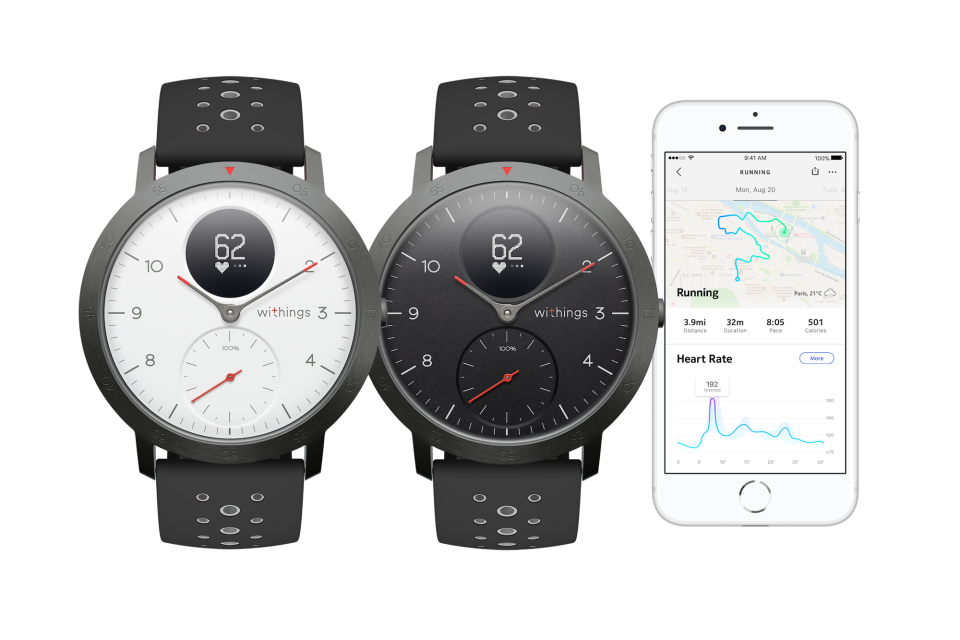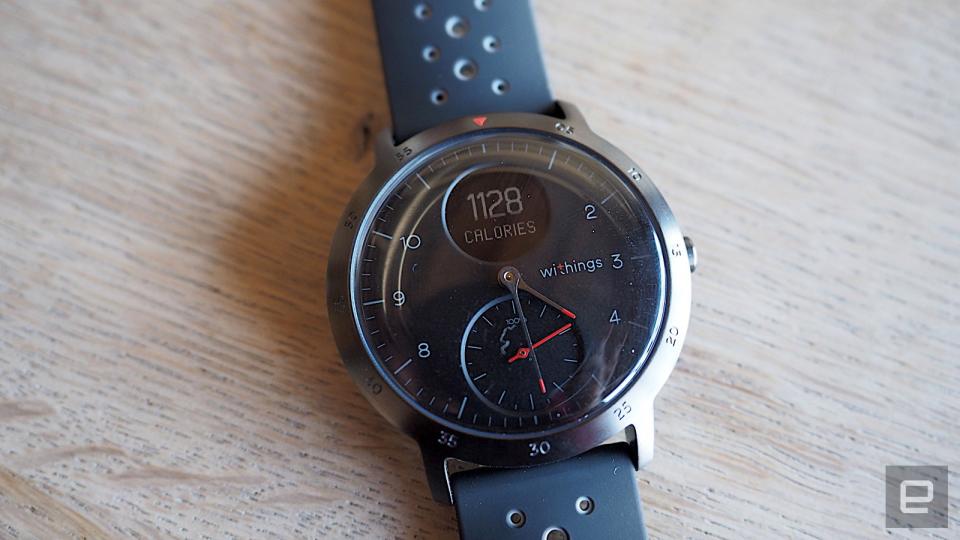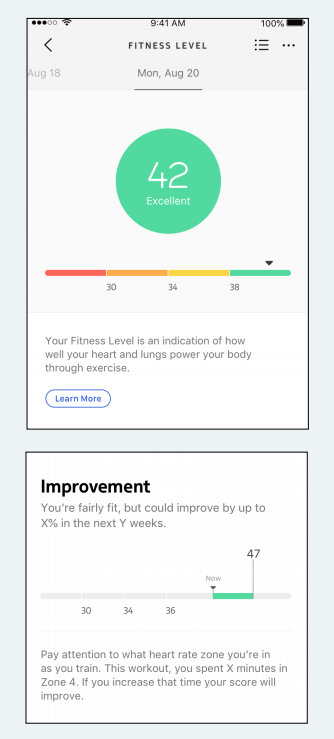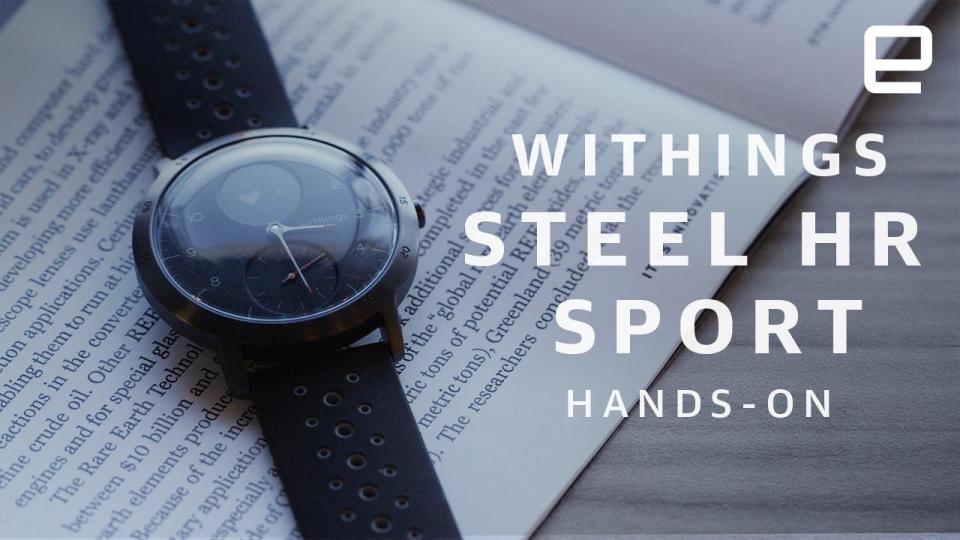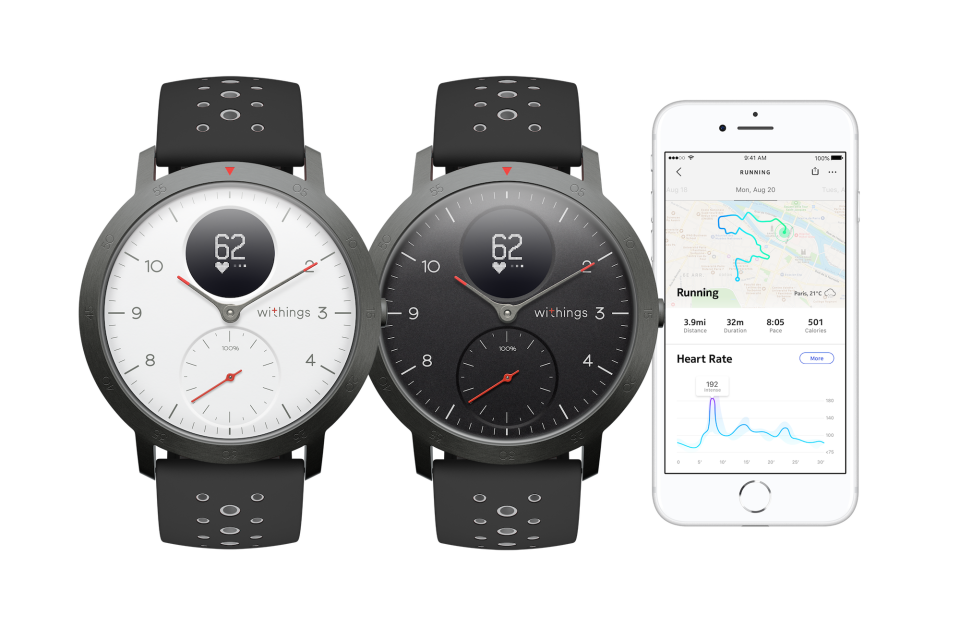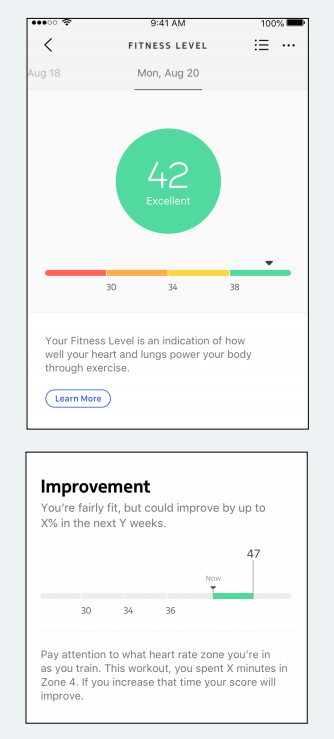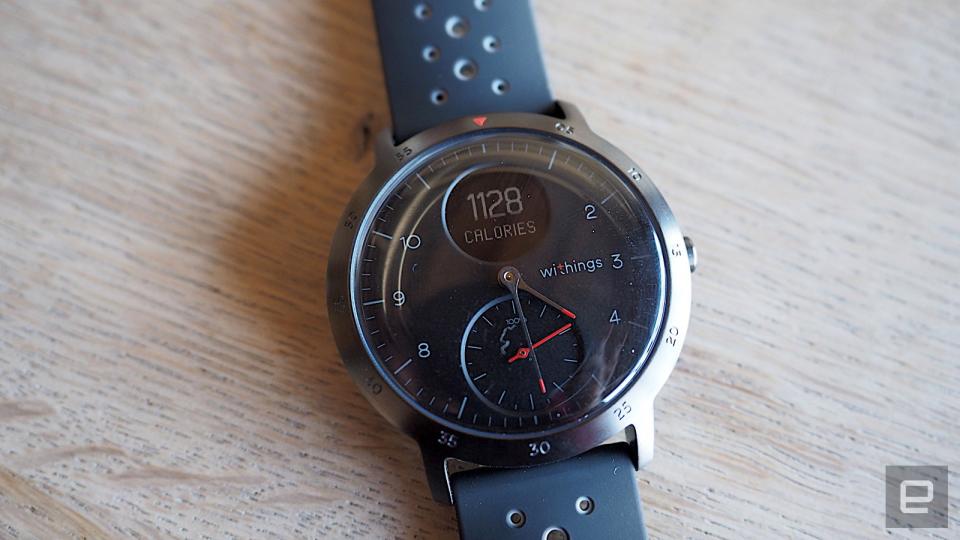Withings makes its comeback with the Steel HR Sport
The new wearable introduces connected GPS and VO2 Max tracking.
In 2016, Nokia bought Withings, which was then renamed to Nokia Health as part of an overall strategy to re-enter the consumer market -- but that didn't quite work out as planned. The health and fitness industry is apparently a lot harder than it looks, and Nokia wanted out. As luck would have it, Withings co-founder Eric Carreel decided to buy it back, with big plans to revive the brand once more. Today, it's unveiling a new logo, a new website, a new app and, last but not least, a new product. That product would be the Steel HR Sport, which renews the company's focus on fitness.
Design-wise, the Steel HR Sport isn't that much different from the Steel HR. At a quick glance, it has the appearance of a simple and stylish analog watch. But look a little closer, you'll notice a couple of unique features: a sub-dial that tracks the progress toward your daily step goal, plus a tiny circular display that shows basic information like the date, notifications, and the battery level.
This small screen is also used to display various health-related data like your heart rate -- both the Steel HR and the Steel HR Sport have a built-in heart rate monitor -- distance traveled and the exact number of steps you've taken that day -- the aforementioned sub-dial only shows a percentage of your progress. Like the Steel HR, the Steel HR Sport include sleep tracking, water-resistance of up to 50 meters, a smart alarm that wakes you up at the "optimal" time, and multisport tracking for over 30 activities (that include yoga, volleyball and skiing). What I especially like is that the Steel HR series has a 25-day battery life, which can be extended another 20 days in a power reserve mode.
There are two features that set the Steel HR Sport apart from the rest of Withings lineup. One is that it has connected GPS tracking (this means it relies on your phone for GPS, so you'll still need to carry that around with you on your runs), making it the first Withings wearable to have such a feature. This lets runners and cyclists map their route and also track stats like distance and pace via the companion Health Mate app.

The second feature is fitness level analytics thanks to a VO2 max indicator, which is another first for Withings. This measures the heart and muscles' ability to convert oxygen into energy during physical exercise. The idea is that the fitter the individual, the higher the VO2 max rating. According to Withings, the Steel HR Sport can calculate this Fitness Level number based on your pace, your resting heart rate, as well as morphological data like age, weight and sex. This calculation is done as soon as the workout is over, and you'll see the results in the app. Knowing this metric, Withings says, could be useful for fitness buffs to help optimize their training and increase performance.
I wasn't able to test out the fitness features extensively based on my brief experience with it, but I did spend some time just wearing it as an everyday watch. It sounds a little silly perhaps, but I really like how unassuming it looks and feels. It doesn't scream smartwatch like an Apple Watch might, and it doesn't proclaim it's a fitness tracker like a Fitbit might either.
Instead, it just looks and feels like an ordinary watch, except with a couple of the aforementioned complications. Navigation is pretty easy; you click the crown to go through the different options on the display, and long-press to select. Receiving notifications works well enough, though particularly lengthy ones (like text messages for example) can easily overwhelm the tiny display with scrolling text, which can be a bit annoying.

The Withings Steel HR Sport is available in black and white and only in the 40mm size. It comes with a gray dotted silicone band, though you have the option of swapping it out with any 20mm-wide strap of your own.
As compelling as the Steel HR Sport is, it has some tough competition. At $200, it's priced the same as the Fitbit Versa, which is definitely more of a smartwatch due to its support for third-party apps like Yelp and Nest. Yet, the Versa lacks GPS, which the Steel HR Sport has.
A stronger contender than even Fitbit, is Garmin, which offers a variety of different fitness watches depending on your tastes and budget. For example, the Fenix and Vivoactive series feature GPS, NFC, a stress tracker, an array of built-in sports apps and optional music player. Garmin even has a Withings Steel HR rival of sorts in the form of the Vivomove HR, which is a stylish rose gold hybrid smartwatch that also has VO2 Max and heart rate tracking, but lacks GPS and has a shorter battery life of 5 days (and an extra two weeks of activity-tracking mode).
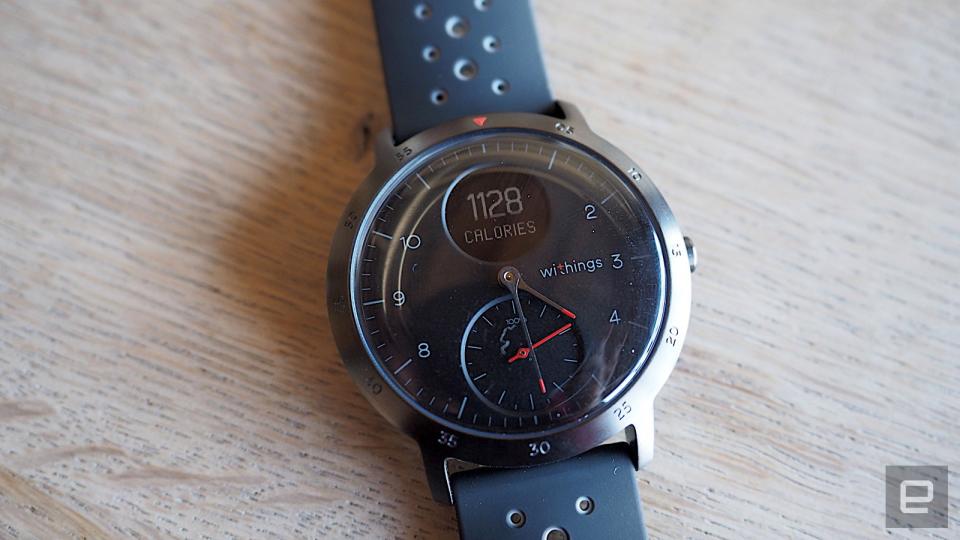
Of course, there's also Apple, which released its latest Watch Series 4 just last week. It's definitely much more of a smartwatch than the Withings, and therefore more expensive, but it also offers a lot more health-related features like fall-detection and an electrocardiogram. But, its battery life is also much shorter than the Withings and the Garmin Vivomove HR, lasting only about a day or two at most.
I asked Carreel what he thought of all the competition, and he said that it was a good sign. "We're excited to see Apple go in this direction of preventive health," he said of the Watch Series 4, indicating that this is also where Withings is heading. "I'm very happy to come back when the market is more in tune with our vision."
Still, Withings is facing a rather tough battle as it goes up against these tech and fitness giants. "We are at the beginning of a big story. We want to focus on health, and not just sports and fitness," promised Carreel. "There'll be more coming from us in the months ahead."

